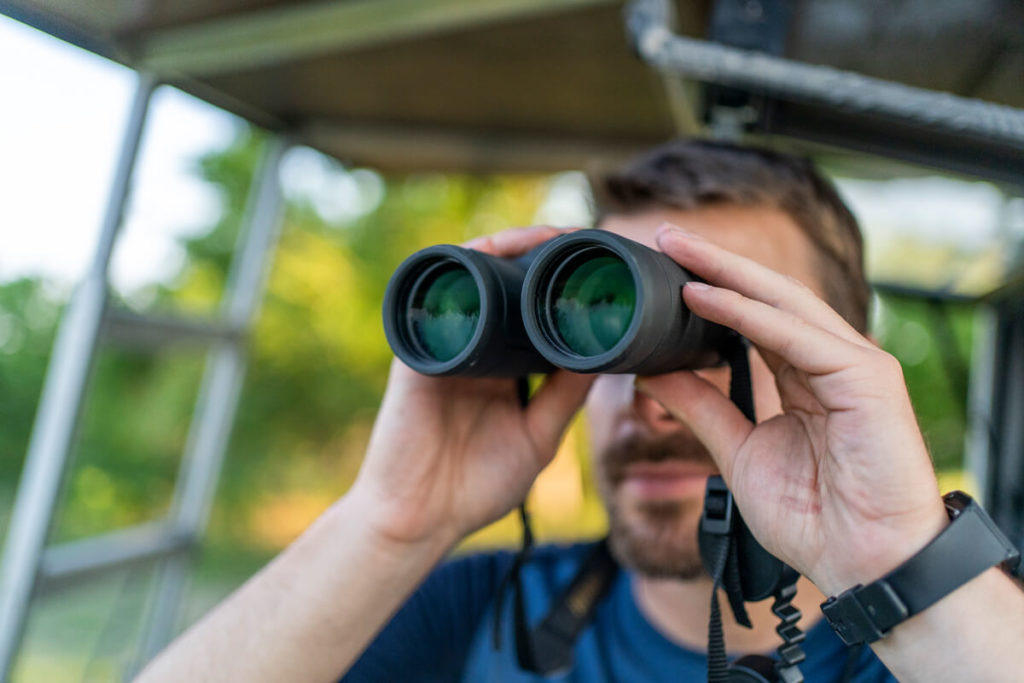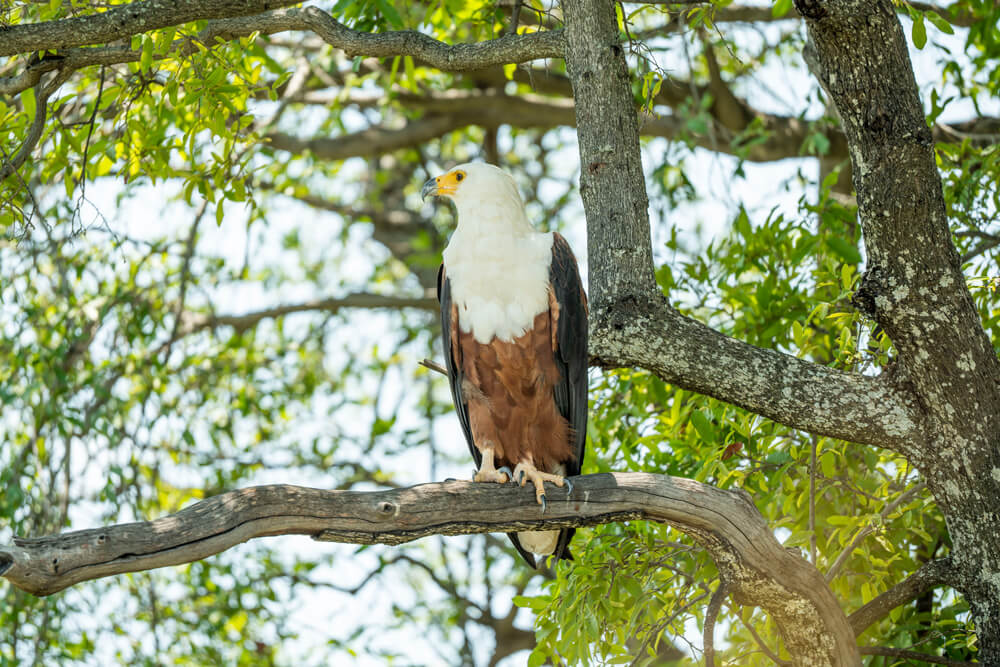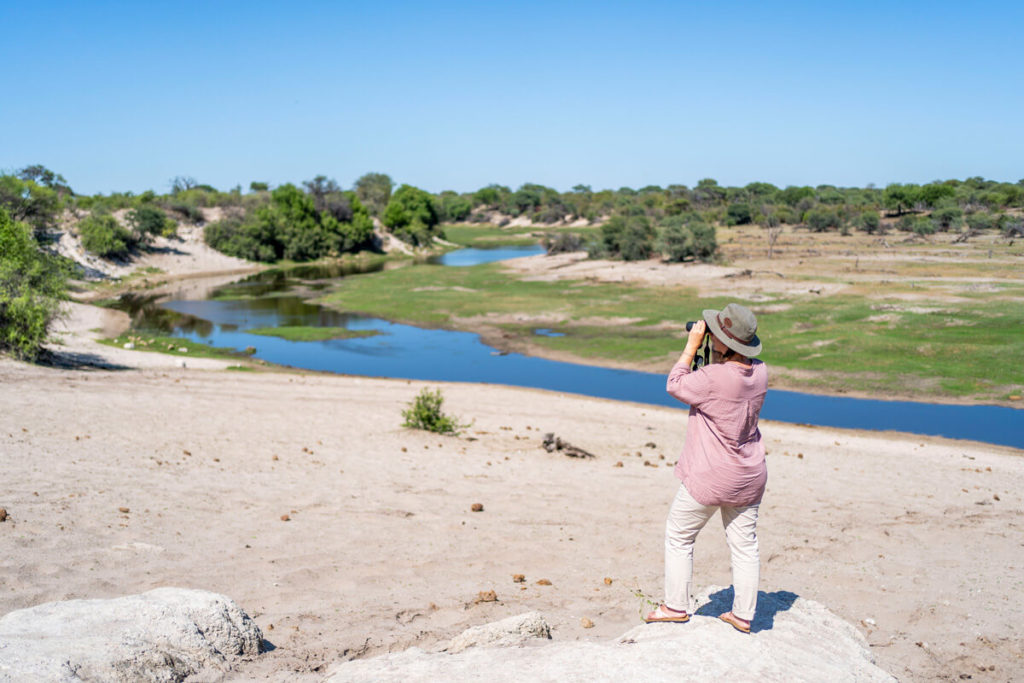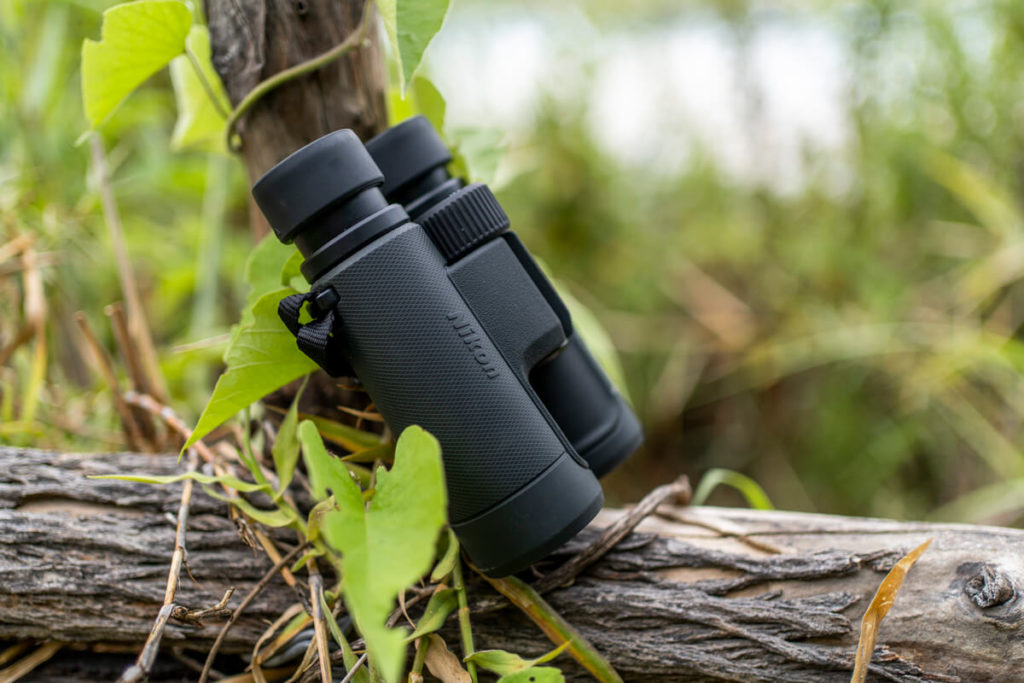Are you looking for binoculars for a safari or would you like to observe the birdlife on your next hike? While preparing for our multi-week trip through Botswana and South Africa, it was clear early on: We needed high-performance binoculars for hikes and safaris. But after a brief online search, this project turned out to be far from easy.
Which binoculars are particularly suitable for safaris? What should you actually look for when buying binoculars? What do all these numbers mean? We were quite overwhelmed at first. The range of binoculars is simply overwhelming; as a layperson, you’re practically overwhelmed by the selection. And what do all these values mean? 8×50? 10×25? And why do some 8×42 binoculars cost €50 and some even €1,500?
After we bought a pair of binoculars on eBay classifieds that were absolutely useless, we first had to find out what really matters. With this small binoculars guide and a review, we want to offer you an easier introduction to the topic.
- What do the numbers on binoculars mean?
- What magnification should the binoculars have?
- Which binoculars are suitable for a safari?
- Our decision: Nikon ProStaff 7s 8×42
- Conclusion – Has the NIKON ProStaff 7s proven itself?
What do the numbers on binoculars mean?
10×25, 8×40, 10×30? Until recently, we were also clueless. But it’s actually not that difficult: The first number indicates the actual magnification, i.e., how “close” you can get. The second number indicates the diameter of the lens aperture. To put it bluntly: you’re looking through a thin straw or a thick paper towel.
The larger the number, the larger the field of view – which makes a huge difference! With a larger aperture, more light enters the binoculars, which is especially important at dusk or in the dark. But our eBay bargain showed us: Unfortunately, these two numbers alone don’t make a good pair of binoculars!
Because these numbers only indicate certain sizes, not the quality of the lenses. This is the crucial detail that separates the wheat from the chaff. After all, what’s the point of all these great features if the lenses end up cloudy, the edges blurred, or the colors pale?

We held many binoculars during our trip to Africa and can say that these are where the biggest differences really lie. Unfortunately, many retailers on Amazon and other platforms advertise with phrases like “pin-sharp lenses,” “HD optics,” or “high-performance magnification,” so you often don’t notice this important detail online.
To avoid another bad purchase, we focused on well-known brand manufacturers. A manufacturer that, ideally, also has other experience with lenses and glass. And so we landed on brands like Zeiss, Sony, Canon, and Nikon.
These are known for their excellent products in photography. This time, we wanted to spend a little more on a decent pair of brand-name binoculars. Investing €200 to €300 may be a pain for many at first, but once purchased, you’ll certainly enjoy them for 10 years or more.

What magnification should the binoculars have?
The bigger, the better! You might think so. With each magnification, two negative aspects come into play: camera shake and a smaller field of view. As long as you can’t support your arms, some “wobbling” is perfectly normal. However, this wobbling increases exponentially the larger the zoom.
In photography, large zoom lenses are therefore equipped with a stabilizer – which is not the case with binoculars in this price range. Conversely, this means that less zoom provides a steadier observation experience.

Another argument against ultra-high magnification is an ever-shrinking field of view. Logical: The larger we see small details, the less we see of the overall picture. So, if you want to see not just a giraffe’s head, but the entire animal, or even several animals in a herd, you’ll need a smaller zoom. We therefore recommend 8x or 10x magnification (e.g., 8×42 or 10×50).
Which binoculars are suitable for a safari?
Your first thought is probably to have the greatest possible magnification. However, our test with an 8×42 and a 10×42 showed that more magnification isn’t always better. After countless game drives, we were able to determine that most of the action takes place at a distance of between 30 and 100 meters.

Here, we found the 8×42 significantly more comfortable, as it was a) steadier and “more shake-free” than the 10×42 and b) provided a beautiful overall image. Higher magnification also results in a smaller image section, so the overall picture is often lost. For example, while it’s nice to see a single zebra up close, you usually want to observe the entire herd.
Our Decision: Nikon ProStaff 7s 8X42
The NIKON ProStaff 7s* seemed to us to be the perfect pair of binoculars with optimal magnification, lens size, and weight and portability. With 8x magnification, you can get close enough to the animals while still having a relatively steady image.
Binoculars with a 42 or 50mm lens aperture may be a bit larger and heavier than slim 25mm binoculars, but it was important to us to be able to observe the animals well, even at sunrise and dusk. The weight also supports steady observation, as the binoculars fit perfectly in the hand.

The NIKON ProStaff 7s binoculars are also waterproof, which is not only beneficial in (light) rain, but certainly also contributes to their longevity in general. The binoculars are rubberized all around, making them easy to grip and robust. The binoculars come in a practical carrying case, with protective caps for the lenses, and a carrying strap.
Conclusion – Has the NIKON ProStaff 7s proven itself?
This question can be answered with a resounding YES! As already mentioned, we used quite a few binoculars on our trip through southern Africa. Our Nikon ProStaff 7s was indeed the most fun to use. In addition to the feel and operation, the image sharpness and color reproduction were particularly impressive.
Luring with the binoculars was so much fun that we will definitely pack them on every hike. We are already looking forward to all the wonderful moments the binoculars will bring us.
Update 11/2025: We have taken the binoculars with us on many trips since then: whether to Oman, Austria, Lapland, Canada, South Africa, Portugal, or here in Germany – we are still thrilled.